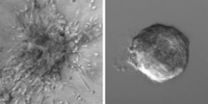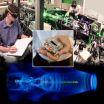(Press-News.org) Depending on which naive theory consumers use, a low price can indicate either good value or low quality, whereas a high price may imply either poor value or high quality, according to a new study in the Journal of Consumer Research.
"Consumers rarely have complete information and use various strategies to fill the gaps in their knowledge as they consider and choose products. One of these strategies involves using naive theories: informal, common sense, explanations that consumers use to make sense of their environment. For example, consumers may believe that popular products are high in quality while also believing that scarce products are high in quality," write authors Hélène Deval (Dalhousie University), Susan P. Mantel (Ball State University), Frank R. Kardes (University of Cincinnati), and Steven S. Posavac (Vanderbilt University).
In one study, consumers were shown an ad for a bottle of wine with either a high or low price. When subtly reminded of quality, consumers evaluated the expensive wine more favorably than the cheap wine. However, when subtly reminded of value, they rated the cheap wine more favorably.
Sales promotions succeed when consumers perceive that they are getting a good deal, but they can also backfire if consumers perceive that lower prices indicate poor quality. Or, as J.C. Penney recently discovered, a company may implement an everyday low-pricing strategy that manages to reduce brand value and alienate consumers if many of them believe that low prices equal low quality. Over the years, J.C. Penney customers had become so used to sales that they no longer believed they were getting a good deal.
"Using subtle tactics, companies can bring a pre-existing naive theory to the consumer's mind in order to guide favorable interpretation of their message. Yet, these tactics can backfire dramatically if they design a strategy by assuming that a certain naive theory is going to drive consumer evaluation and choice when, in fact, several naive theories are available to the consumer," the authors conclude.
### Hélène Deval, Susan P. Mantel, Frank R. Kardes, and Steven S. Posavac. "How Naive Theories Drive Opposing Inferences from the Same Information." Journal of Consumer Research: April 2013. For more information, contact Hélène Deval (helenedeval@gmail.com) or visit http://ejcr.org/.
High quality or poor value: When do consumers make different conclusions about the same product?
2012-10-22
ELSE PRESS RELEASES FROM THIS DATE:
Rewards programs: When do consumers compare experience over value?
2012-10-22
Consumers are often less satisfied when they buy or receive products that are easily counted because this makes them focus on value instead of experience, according to a new study in the Journal of Consumer Research.
"Numbers make us feel more certain of what is in front of us. When we count, we understand exactly how big, expensive, heavy, or old something is. But when we buy or receive products that are easily counted, we may be less satisfied," write authors Jingjing Ma and Neal J. Roese (both Kellogg School of Management, Northwestern University).
What happens when ...
Greater parental stress linked to children's obesity, fast food use and reduced physical activity
2012-10-22
Parents with a higher number of stressors in their lives are more likely to have obese children, according to a new study by pediatric researchers. Furthermore, when parents perceive themselves to be stressed, their children eat fast food more often, compared to children whose parents feel less stressed.
"Stress in parents may be an important risk factor for child obesity and related behaviors," said Elizabeth Prout-Parks, M.D., a physician nutrition specialist at The Children's Hospital of Philadelphia, who led a study published online today in the November issue of ...
Friendship 2.0: Teens' technology use promotes sense of belonging, identity
2012-10-22
With adolescents seemingly glued to cell phones and social networking websites, experts are investigating whether the near-constant digital activity changes youths' development.
A new study from the University of Washington shows that digital media helps teens reach developmental milestones, such as fostering a sense of belonging and sharing personal problems. But the study also raised questions about whether digital connectedness might hinder the development of an autonomous sense of self.
Katie Davis, an assistant professor in the Information School and an expert ...
Breast cancer cells enticed to spread by 'tumorous environment' as well as genetic changes
2012-10-22
A new study from Johns Hopkins researchers suggests that the lethal spread of breast cancer is as dependent on a tumor's protein-rich environment as on genetic changes inside tumor cells.
In a report in the Sept. 25 issue of the Proceedings of the National Academy of Sciences, the scientists conclude that a molecular signal in the protein meshwork surrounding the breast cancer cells may provide the critical trigger to initiate the life-threatening process of metastasis to distant sites in the body.
Moreover, their experiments suggest that the environment surrounding ...
Clue to cause of Alzheimer's dementia found in brain samples
2012-10-22
Researchers at Washington University School of Medicine in St. Louis have found a key difference in the brains of people with Alzheimer's disease and those who are cognitively normal but still have brain plaques that characterize this type of dementia.
"There is a very interesting group of people whose thinking and memory are normal, even late in life, yet their brains are full of amyloid beta plaques that appear to be identical to what's seen in Alzheimer's disease," says David L. Brody, MD, PhD, associate professor of neurology. "How this can occur is a tantalizing ...
State-of-the-art beams from table-top accelerators
2012-10-22
Focusing in on beam focus
The rapidly evolving technology of laser plasma accelerators (LPAs) – called "table-top accelerators" because their length can be measured in centimeters instead of kilometers – promises a new breed of machines, far less expensive and with far less impact on the land and the environment than today's conventional accelerators.
Future LPAs offer not only compact high-energy colliders for fundamental physics but diminutive light sources as well. These will probe chemical reactions, from artificial photosynthesis to "green catalysis"; unique biological ...
Scattered X-rays reveal diseased tissue
2012-10-22
This press release is available in German.
Chronic obstructive pulmonary disease (COPD) is considered the fourth most common cause of death in the United States. Usually the precursor to this life-threatening lung disease is a chronic bronchitis. Partially destroyed alveoli and an over-inflation of the lungs, known as emphysema, are serious side effects. However, the subtle differences in the tissue are barely discernable in standard X-ray images.
In addition to the conventional X-ray images, the Munich scientists analyzed the radiation scattered by the tissue. ...
Fewer patient deaths after surgery in hospitals known for good nursing care
2012-10-22
Patients treated in magnet hospitals (specially designated for their nursing excellence) had 14 percent lower odds of death than those in non-magnet hospitals in a four-state study of 564 hospitals led by the University of Pennsylvania School of Nursing. The magnet designation, determined by the American Nurses Credentialing Center, recognizes high-quality patient care, high levels of nurse education, and nursing innovation.
"Even controlling for differences in nursing, hospital, and patient characteristics, surgical patients fared better in magnet hospitals," said lead ...
Energy-sensing switch discovery could have broad implications for Biology & Medicine
2012-10-22
LA JOLLA, CA – October 21, 2012 – Biochemists at The Scripps Research Institute (TSRI) have discovered a genetic sequence that can alter its host gene's activity in response to cellular energy levels. The scientists have found this particular energy-sensing switch in bacterial genes, which could make it a target for a powerful new class of antibiotics. If similar energy-sensing switches are also identified for human genes, they may be useful for treating metabolism-related disorders such as type 2 diabetes and heart disease.
"This discovery adds a new dimension to our ...
How a fish broke a law of physics
2012-10-22
Reflective surfaces polarize light, a phenomenon that fishermen or photographers overcome by using polarizing sunglasses or polarizing filters to cut our reflective glare. However, PhD student Tom Jordan from the Bristol Centre for Complexity Sciences and his supervisors Professor Julian Partridge and Dr Nicholas Roberts in Bristol's School of Biological Sciences found that these silvery fish have overcome this basic law of reflection – an adaptation that may help them evade predators.
Previously, it was thought that the fish's skin – which contains "multilayer" arrangements ...



